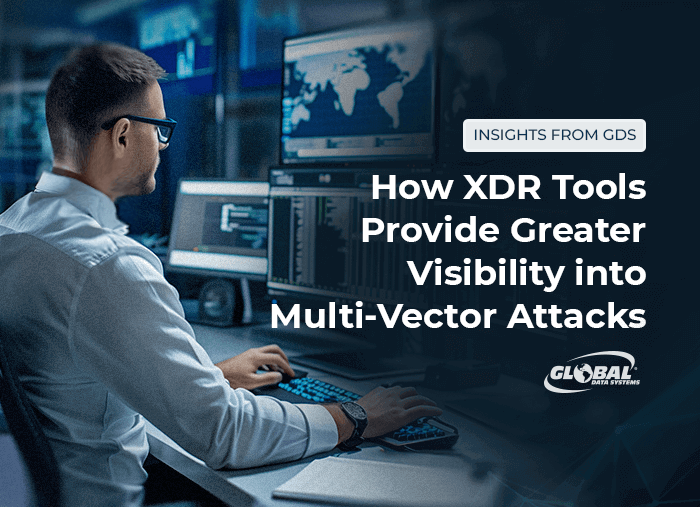How XDR Tools Provide Greater Visibility into Multi-Vector Attacks
Many cyberattacks exploit multiple vulnerabilities across the IT environment. Traditional security tools are often unable to combat these complex, multi-vector attacks.

That’s because many of these tools are designed to provide a single, focused defense. The typical organization uses dozens of these point solutions from multiple vendors as part of a layered security strategy. However, these tools don’t work together seamlessly, leaving blind spots that attackers can exploit.
Extended detection and response (XDR) is designed to bridge those gaps. XDR tools gather and correlate data from multiple sources, providing greater visibility into the organization’s overall security posture. More importantly, XDR provides IT teams with the context they need to identify multi-vector attacks that might otherwise go unnoticed by legacy tools. It serves as a unified platform for detection, analysis and remediation, significantly reducing the time to respond to attacks.
Limitations of Legacy Security Tools
Legacy tools provide isolated alerts that lack the context needed to understand the full scope of an attack. Many also lack real-time monitoring capabilities, creating delays in detection and response. Security remains reactive instead of proactive and requires manual intervention.
Several vendors have developed a platform approach to security that integrates various tools in their solution suite. However, most organizations prefer to use tools they consider best of breed for each function. This patchwork approach makes it difficult for IT teams to gain a holistic view of the threat environment. Many teams dedicate precious time and resources to correlating security event data from multiple products.
Extended detection and response (XDR) tools provide comprehensive visibility and faster response to multi-vector attacks by integrating data from multiple sources and offering real-time monitoring across the entire IT environment.
XDR evolved from endpoint detection and response (EDR), which monitors PCs, laptops, mobile devices and other endpoints and responds to any threats it detects. XDR takes a broader approach, extending the scope of threat detection to applications, cloud environments, networks and other layers of the security stack. It increases the effectiveness of security tools by harnessing their collective power.
The Value of XDR
In addition to natively integrating multiple security solutions, XDR tools provide real-time monitoring across the entire IT environment. Advanced analytics provide contextual insight and prioritize threats according to severity. Automation and machine learning enable XDR tools to respond to threats by performing predefined actions. Together, these capabilities reduce response time while providing a streamlined approach to security management.
XDR is not to be confused with security information and event management (SIEM), although there are similarities. SIEM systems aggregate log data from across the environment, correlate events and provide real-time analysis of alerts. As such, a well-tuned SIEM system helps reduce the “alert fatigue” that plagues many IT teams. However, SIEM systems rely upon rules and are blind to exploits that don’t appear in logs. XDR is more comprehensive and proactive, enabling faster threat detection and response.
Managed detection and response (MDR) can further enhance XDR. While XDR is designed to empower in-house IT teams, MDR adds a managed services element that minimizes the time and effort to detect and respond to threats.
The GDS SOC-as-a-Service XDR Solution
GDS has developed a Security Operations Center (SOC) as-a-Service solution that maximizes the strengths of three core security components. SIEM, EDR and network detection and response (NDR) work together to provide full visibility across endpoints, networks and the cloud. The GDS solution also includes threat intelligence, case management, incident response, automation and collaboration.
These capabilities are backed by the Computer Security Incident Response Team within the GDS SOC, who take responsibility for analyzing and investigating security events. If a true security incident is identified, customers are provided with all the information they need to activate their incident response procedures. Contact one of our experts to learn how GDS SOC-as-a-Service XDR can boost your security posture.
Benefits of Managed IT Services from Global Data Systems
- Strategic Managed IT: We help you solve your technology related business problems.
- Connectivity: We get you reliable, secure connectivity anywhere in the western hemisphere in 48 hours.
- Support: When you need help simply call our 24x7x365 support number.
- Billing: Instead of managing hundreds of vendors - get one, easy to read bill from GDS.
Contact Managed Services Provider, Global Data Systems >
